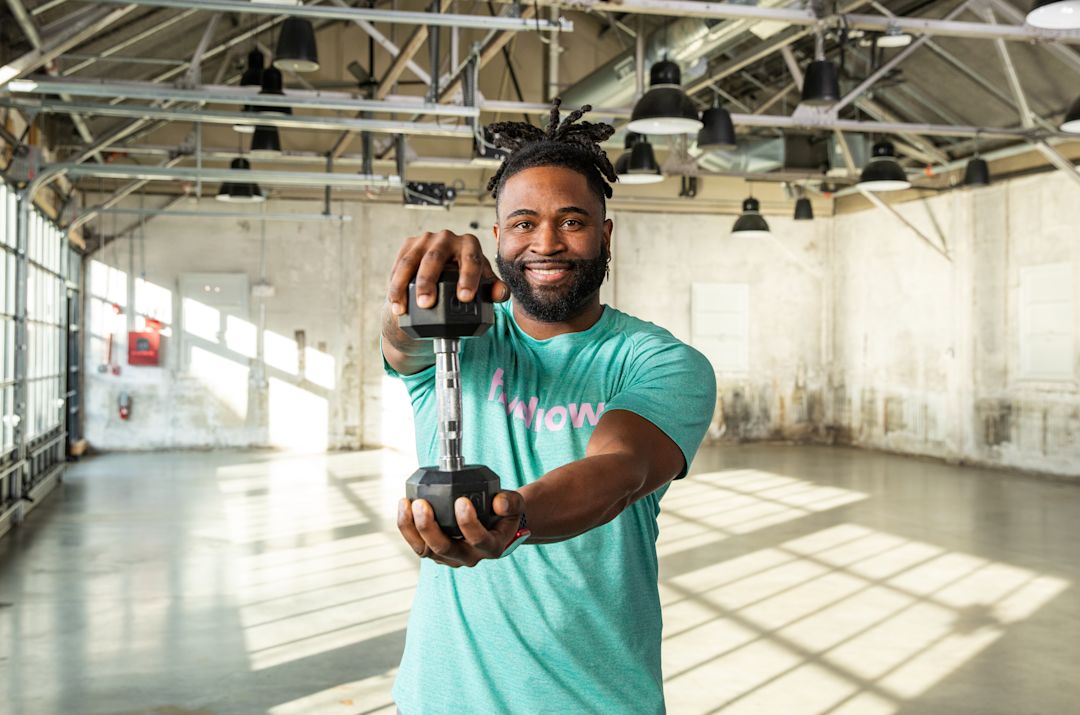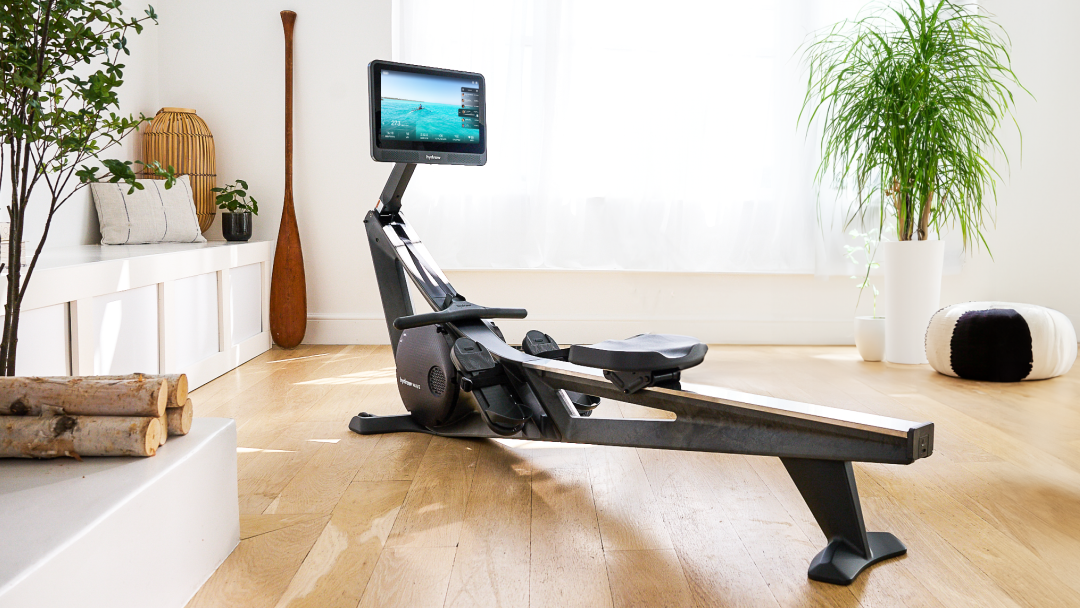How to Start Strength Training: 12 Tips for Beginners

If you’re thinking about incorporating strength training into your fitness regimen, you’re likely already familiar with the benefits. Increased muscle mass and bone density, improvements in strength, mobility, and balance, a higher metabolism, and a better mood are just some of the perks to strength training regularly. But if you’re just getting into it—and especially if you’re used to other forms of exercise—it can be difficult to know where to start.
That’s where we come in. Here, we’re sharing 12 tips to help you hit the ground running (or lifting, as it were) and start strength training in a way that will help you see results in no time, including:
Let’s get started!
1. Define your goals
Before you determine the approach you want to take to your strength training regimen, it’s important to think about what you want to get out of it. Do you want to get stronger? Grow your muscles? Improve your ability to stay active and energized throughout the day? Maintain your current level of strength and mobility?
Knowing your goals in pursuing strength training will help you structure your workouts appropriately to maximize your results as well as give you the motivation to stick to your plan.

Explore Hydrow's library of strength training workouts.
2. Learn proper form
Regardless of the exercise you are performing or the amount or type of resistance you are using, proper form is vital in strength training. Using the right form protects you from injury and ensures you’re engaging and working the muscles you are trying to target.
If you don’t master proper form first, you risk using momentum instead of your muscle strength to move through exercises or putting unwanted strain on your joints and muscles, neither of which is going to get you the results you are looking for.
3. Start with bodyweight exercises
A good way to make sure you’ve mastered proper form is to begin by working out with just your bodyweight. You never want to use more weight than you can move safely, so starting to get stronger with just your bodyweight is a great place to begin. Plus, there are plenty of bodyweight exercises that provide an impressive burn. Some of our favorites include:
Forearm plank
Side plank
Mountain climbers
Push ups
Tricep push-ups
Squats
Reverse lunges
Supermans
Glute bridges

Explore Hydrow’s library of 5,000+ rowing, circuit training, yoga, Pilates, and mobility workouts.
4. Begin with light weights
Once you feel comfortable completing a full-body bodyweight workout, move to light weights. As we just mentioned, lifting heavier weights than you are comfortable with that you can’t move with proper form puts you at an increased risk of injury—and that can derail your strength training regimen before you’ve even begun. That’s why it’s always smart to start light and work up from there.
You may be wondering what “light” means here. Follow these guidelines for dumbbell ranges to start in then build from there:
For shoulder exercises, such as lateral and front raises: 1 to 5 pounds
For arm exercises, such as bicep curls and tricep kickbacks: 3 to 10 pounds
For back exercises, such as bent-over rows and single-arm rows: 8 to 12 pounds
For chest exercises, such as chest presses and flies: 8 to 12 pounds
For leg exercises, such as squats, lunges, and deadlifts: 8 to 12 pounds
5. Follow a balanced program
Nobody wants to be the guy who is obviously skipping leg day, right? Beyond the aesthetic reasons to make sure you’re working your upper body, lower body, and core in your strength training program, keeping your regimen balanced is going to guarantee the total-body strength and mobility you need to move healthfully and effortlessly through your daily life.
One simple way to ensure you’re regularly hitting every major muscle group is to try to work each one at least once over the course of each week of strength training. You can do this by making every strength training session a total-body workout, which may be the easiest approach if you’re starting out with just one or two strength workouts per week.
However, if you’re diving in with three or more sessions per week, you can break things up to focus on your upper body one day, your lower body on the next, and your core in your third session.
6. Warm up and cool down
It can be tempting to skip the warm-up and cool-down before and after a strength training workout, especially if you’re short on time, but we don’t recommend it. Going into a strength training session cold, with tight muscles, puts you at an increased risk of injury and can limit your range of motion.
Taking just a few minutes to get loose before a workout and raise your body temperature will help you get the most out of your session. Then, cooling down when you finish can reduce muscle soreness in the hours and days that follow.

Did you know?
Over 90% of Hydrow members are still active one year later.
7. Focus on compound movements
Incorporating compound exercises into your strength training workouts is one of the best ways to maximize the efficiency of your workout. These movements target multiple muscle groups at once and quite often mimic the type of movements we do in our daily life.
Moving your extremities by coordinating the legs and arms while using your core to maintain stability will help you create strength everywhere, along with improving your balance and stability and increasing your heart rate.
Some of our favorite compound exercises include:
Squats
Thrusters
Straight arm planks
Burpees
Jumping lunges
Romanian deadlift to upright row
Reverse lunge to hammer curl
8. Prioritize rest and recovery
Strength training is challenging for people at every fitness level, so don’t be surprised if you’re sore for a few days after each workout when you’re starting out. The best way to reduce muscle soreness and fatigue is to make sure you’re giving your muscles adequate time to recover between strength workouts.
Do note that alternating your strength training with cardio workouts is sufficient for giving your muscles the rest they need—though we do recommend giving your body at least one full rest day per week.
But at the beginning, it’s important to listen to your body and what it needs.
9. Track your progress
One of the best things about strength training is that it’s easy to track your progress and see tangible proof that you’re improving. Set goals around the number of reps of an exercise you want to be able to do, the amount of weight you want to be able to lift, or the time it takes you to complete a certain workout, then check on your progress every few weeks. Seeing those gains in black and white is incredibly empowering!
10. Prioritize nutrition and hydration
Fueling your body properly is key to maximizing the results of your new strength training regimen. Make sure you’re enjoying a mix of protein, healthy fats, and complex carbohydrates, as well as plenty of water, to help stimulate muscle growth. The best way to make sure you’re properly hydrated for your workout is to drink at least 16 ounces of water around two hours before you start, plus another eight ounces every 20 minutes during your workout.

Efficiency for the win.
Work 86% of your muscles in just 20 minutes of rowing with Hydrow.
11. Stay consistent
Just as with any new exercise format or workout program, the only way you are going to improve and see results is by being consistent. That doesn’t mean you need to do strength training four days a week from the jump, but it does mean you should establish a regular routine that you can realistically stick to. Remember, the best approach is the one that works best for you!
12. Don’t be afraid to ask for help
Starting a new exercise format can be daunting, especially one that requires you to learn new movements and techniques. If you need guidance, don’t hesitate to call a friend who has experience with strength training or schedule a session with a personal trainer at your home or at a local gym. Even one session in which you run through the basics can be incredibly helpful.
Get stronger today!
Looking for more guidance? Hydrow offers guided strength training workouts for every fitness level, all led by world-class Athletes who coach you through each movement and help you stay consistent. Additionally, our rowing workouts target 86% of your muscles with every stroke, delivering full-body training and real results.
Explore Hydrow’s strength workouts and see how far you can go.

Real strength keeps moving
Learn how working out with Hydrow can help support a fuller, more active life.
















